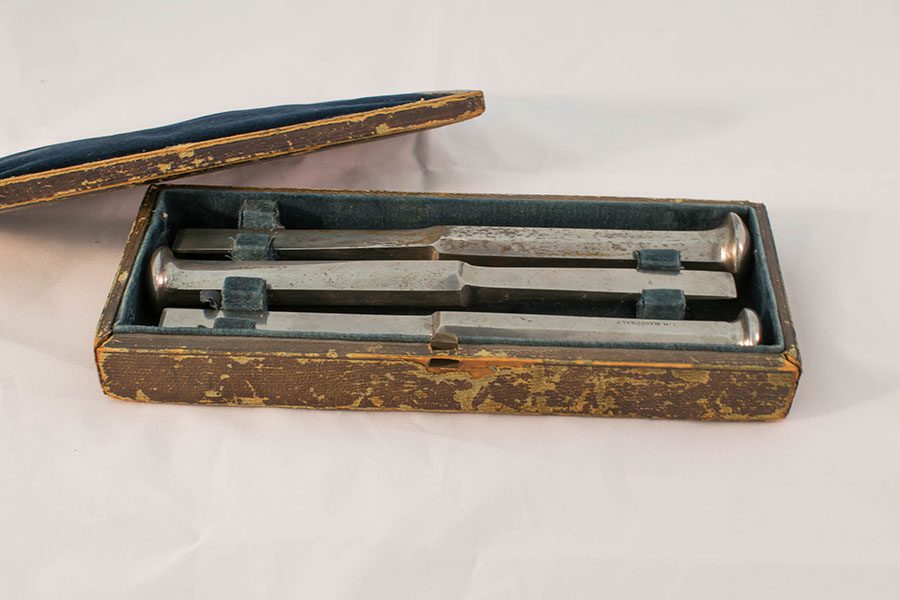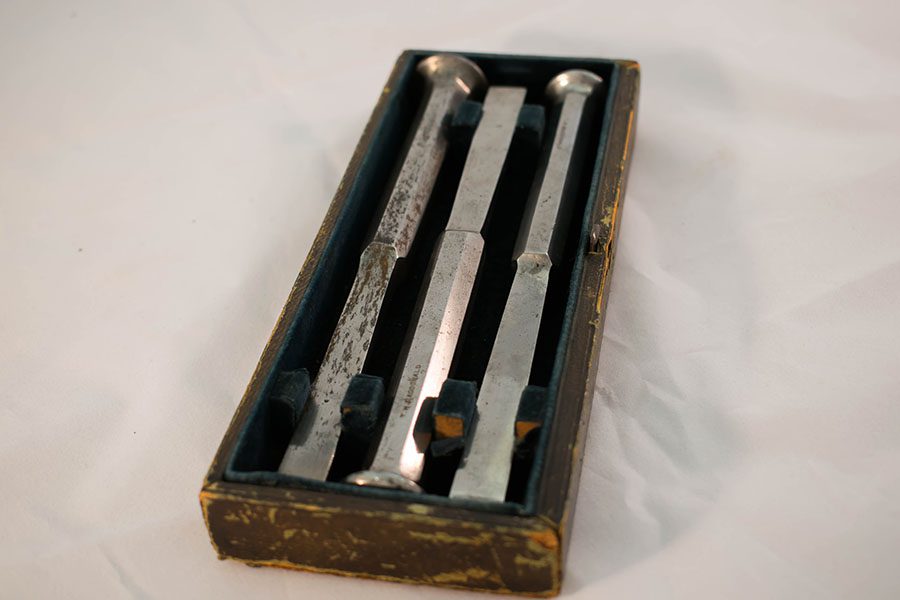William Macewen and Osteotomes

Macewen pioneered several areas of surgery through his work and research in Glasgow, from neurosurgery to aseptic surgery to bone surgery. He truly was one of the greats.
William Macewen is one of Glasgow’s greatest surgeons from history, but probably one of the most unheard of. A man dedicated to his trade, Macewen pioneered several areas of surgery through his work and research in Glasgow, from neurosurgery to aseptic surgery to bone surgery. He truly was one of the greats.
Born on the Isle of Bute in 1848, Macewen came from a working class family and moved to Glasgow to attend the High School as a teenager, eventually moving on to the University of Glasgow to study medicine. Many influential figures of medicine and surgery were working in Glasgow during this time, one of them being the father of antisepsis- Joseph Lister. Macewen was taught by Lister as a student and worked as one of his surgical dressers at the Glasgow Royal Infirmary. This experience left an imprint on Macewen, who was an advocate for Lister’s antiseptic principles in surgery, further developing them into aspetic principles later in his career.
Macewen’s first position after university was as a police surgeon at the Glasgow Central Police Office on Bell Street. This role required Macewen to treat cases around the city centre, attending to any casualties, but also aiding with investigations. He was also required to attend medically to any of the police staff at his station. Macewen commonly attended to cases of violence, such as stabbings and domestic abuse, as well as more peculiar cases like the dealing of rotten food on the High Street.
One of the areas of surgery that Macewen specialised in was orthopaedics- the surgical treatment of conditions that affect the musculoskeletal system. In the 1870s, Macewen was working as a surgeon at the Glasgow Royal Infirmary. Many of the patients he treated during this time had bone and joint difficulties caused by the Rickets. Rickets was a very common disease in Glasgow during this time, caused by a lack of vitamin D in the diet- this was often a result of a lack of sunlight, overcrowding in slums, and poverty. Children suffering from rickets often presented with with bowed legs or knock-knees, which could only be treated by surgical means.
This is where Macewen’s osteotome comes into the story. To fix the bone alignment issues in patients with Rickets, chunks of bone had to be removed by cutting. These osteotomies were performed using surgical chisels, not disimilar from chisels found in a blacksmith. Macewen wasn’t satisfied with the design of these chisels as they couldn’t be relied upon to make precise incisions into bone. He designed his own chisel, known as the osteotome, with a double-bevelled edge to ensure that the surgeon had more control during the operation. Macewen sent his designs to a local blacksmith, T.H. Macdonald, who produced the osteotomes to Macewen’s specifications- each osteotome was constructed from one sheet of steel with no grooves to ensure aseptic conditions. A set of three of Macewen’s osteotomes are held within the College’s museum collection.



You can find more information about Macewen’s items in our heritage collections here:
https://heritage.rcpsg.ac.uk/items/browse?tags=William+Macewen
Listen to episode 1 of Body of Work Bites here: https://heritage.rcpsg.ac.uk/learn


Leave a Reply